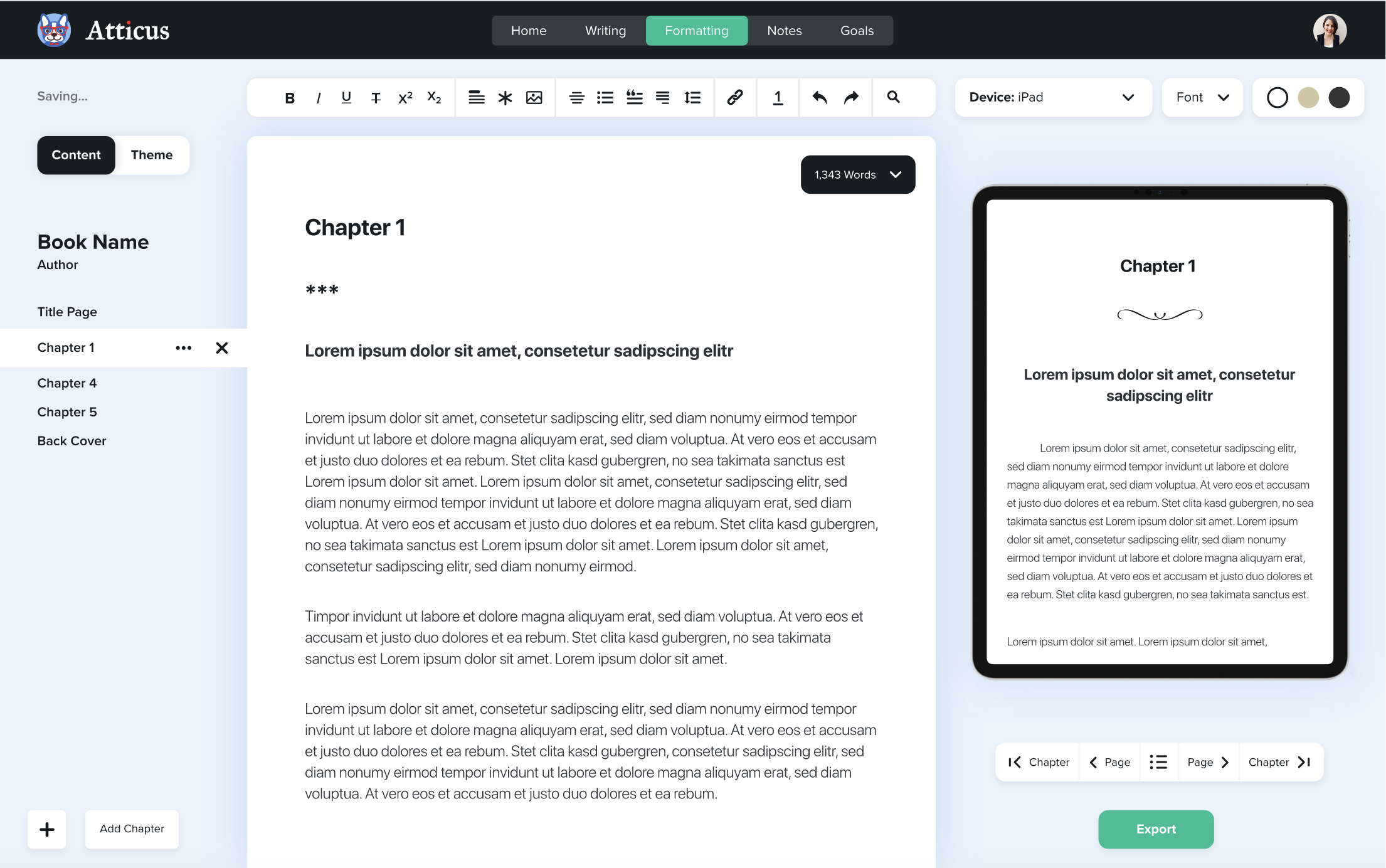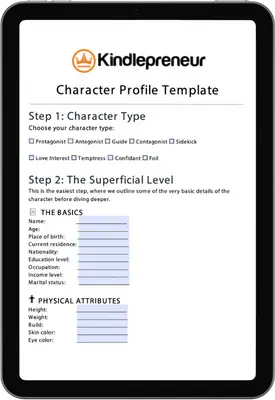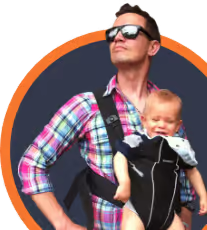If you’ve spent any time reading novels, binging shows, or watching movies, you’ve probably noticed a pattern: certain types of characters keep showing up. From the reluctant hero to the wise mentor to the trickster who stirs the pot, these figures feel instantly familiar. Yet when handled well, they still feel fresh and unforgettable.
That’s because storytellers have relied on character archetypes for thousands of years. They’re the building blocks of story… recurring models that tap into universal human fears, desires, and relationships.
The tricky part? Many writers use archetypes without even realizing it. And when you’re not intentional, your characters can slide into stereotypes or clichés. But once you understand how archetypes work, you can use them deliberately to make your cast more dynamic and your story more powerful.
In this guide, we’ll cover:
- Why archetypes resonate with readers on such a deep level
- What an archetype actually is (and what it isn’t)
- How to avoid flat, overused “stock characters”
- 15 of the most common character archetypes, with traits and examples
What is a Character Archetype?
Every person is unique (with their own quirks, fears, desires, and habits), but certain patterns run through all of us. Storytellers have been drawing on those shared traits for millennia to create characters that feel instantly recognizable.
That’s what we mean by character archetypes: recurring models or “blueprints” that reflect universal aspects of human nature.
When used well, archetypes don’t flatten a character into a cliché. Instead, they give audiences an immediate sense of who a character is and make it easier to believe in them, care about them, and follow their journey.
The idea isn’t new. Psychologist Carl Jung famously proposed four foundational archetypes: the shadow, the self, the persona, and the anima/animus. Later, mythologist Joseph Campbell built on these concepts to show how archetypal figures appear across myths and legends around the world. Modern storytelling simply expands that same framework into a wider cast of recurring roles.
At the heart of it, archetypes matter because stories are about people. And when readers recognize the patterns that connect us, they connect more deeply with the characters on the page.

Formatting Has Never Been Easier
Write and format professional books with ease. Never before has creating formatted books been easier.
Click Here To See It In ActionHow to Avoid Stock Characters and Clichés
Before diving into specific archetypes, it’s worth pausing on two common pitfalls: stock characters and clichés. Both can flatten a story and leave readers disengaged.
Stock Characters
A stock character is a stereotype on legs: instantly recognizable, but one-dimensional. They exist to fill a role rather than to feel real.
Common examples include:
- The Schoolyard Bully
- The Wise Old Man
- The Girl Next Door
- The Cat Lady
Stock characters can work in the background (a waiter, a shopkeeper, a security guard), but if your hero or main antagonist reads like a stock character, the story will struggle. Readers won’t invest in someone who feels copied and pasted.
Clichés
Clichés are overused ideas or tropes that make a story feel tired. Some appear as character traits, others as recycled plot turns. Either way, if readers find themselves thinking “I’ve seen this a hundred times,” the spell is broken.
Examples include:
- A character describing herself by staring into a mirror
- The so-called “strong female character” who’s written as little more than a man in a dress
- The retired warrior who comes out of hiding to avenge his murdered family (yes, John Wick made it cool, but it’s been done to death)
That doesn’t mean you can never use clichés. Satire and comedy thrive on them, and sometimes a writer uses one deliberately to highlight a character’s lack of originality. But outside those contexts, clichés weigh a story down.
Why This Matters for Archetypes
The 15 archetypes you’re about to see are not meant to replace character development. Think of them as starting points.
A great character might borrow traits from two or three archetypes, but they’ll also carry unique quirks, contradictions, and flaws. The best characters feel like individuals, not cardboard cutouts.
1. The Sage/Mentor
If you've ever heard of the Hero's Journey, as popularized by Joseph Campbell, you know that the Mentor plays a big role in helping the hero along.
This is one archetypal character that is easy to identify. The Mentor archetype supports the protagonist(s) and usually provides important information to both the hero and the reader.
The Mentor is usually:
- Wise
- Strong (if not physically, mentally)
- Helpful
- Mysterious
Famous Mentor Examples:
- Obi Wan in Star Wars: A New Hope
- Yoda in Star Wars: The Empire Strikes Back
- Mary Poppins
- The Fair Godmother in Cinderella
2. The Hero
The Hero archetype may seem overly broad at first glance. After all, aren't all protagonists heroes or heroines? Not necessarily.
The Hero archetype is usually the protagonist, but not always. In fact, many protagonists don't have any heroic traits whatsoever, such as the salt-of-the-earth everyman. But more on that later.
For now, let's focus on the Hero.
The Hero is usually:
- Brave
- Honorable
- Persistent
- Concerned More About Others Than Him/Herself
Famous Hero Examples:
- Captain America from the Marvel movies
- Katniss Everdeen from The Hunger Games
- Wonder Woman
- Harry Potter
3. The Warrior
Like the Hero, the Warrior archetype is also pretty easy to spot. Many heroes are also warriors, and vice versa.
Warriors are usually already in possession of a unique skill set when the story starts. They seek justice or vengeance, usually because someone has violated their code.
While Warriors don't have to possess bulging muscles, guns, or a uniform, they often do.
Warriors are usually:
- Confident (until they're laid low just before the climax)
- Strong (mentally and/or physically)
- Determined
- Uncompromising
Famous Warrior Examples:
- Black Widow from the Marvel movies
- John Wick
- Batman
- Brienne of Tarth from Game of Thrones
4. The Orphan
The Orphan is another widely used archetype that's fairly easy to spot.
The Orphan doesn't have to be a child, although it's common that they are. This character type doesn't even have to lose his or her parents to be an Orphan in this sense. Sometimes Orphans have abusive or absentee parents and are looking for the “family” that they can be happy with.
Orphans Are Usually:
- Naïve
- Optimistic
- Empathic
- Downtrodden
Famous Orphan Examples:
- Harry Potter
- Dorothy from The Wizard of Oz
- David Copperfield
- Mowgli from The Jungle Book
5. The Rebel/Outlaw
The Rebel character is a person who marches to the beat of their own drum. Often, these characters are forced into the dark underworld of crime, but this isn't always the case.
The rebel rages against the status quo, either by themselves or as part of a group. Rebels make great protagonists and great antagonists. When done right, the Rebel archetype can make for a sympathetic villain.
The Rebel is Usually:
- Brash
- Overconfident
- Resourceful
- Self Reliant
Famous Rebel Examples:
- Jack Reacher
- Hester Prynne from The Scarlet Letter
- Jane Eyre
- Tom Sawyer
6. The Caregiver
The Caregiver is similar to the Mentor, so much so that the two often share similar traits.
It's rare for a Caregiver or a Mentor to be the main character of the story, but they both serve important functions that help the protagonist on his or her way. Some of the most beloved side characters in movies and novels are Caregivers.
Caregivers are Usually:
- Selfless
- Empathic
- Self-Sacrificing
- Loyal
Famous Caregiver Examples:
- Samwise Gamgee from The Lord of the Rings
- Mrs. Weasley in Harry Potter
- Samwell Tarly in Game of Thrones
- Mary Poppins
7. The Leader
The Leader is a well-known archetype that often mixes well with others, such as the Hero and the Warrior.
The Leader has a goal and a plan to get there, which makes for conflict when something happens to derail the character from his or her goal. Leaders have the ability to inspire action in others.
Since power attracts all types, the Leader can come as a hero or a villain.
Leaders are Often:
- Confident
- Highly Motivated
- Arrogant
- Charismatic
Famous Leader Examples:
- Walter White from Breaking Bad
- Leslie Knope from Parks and Rec
- Rick Grimes from The Walking Dead
- Daenerys Targaryen from Game of Thrones
8. The Lover
The Lover is one character archetype that's big in all kinds of genres, not just romance.
However, in many genres other than romance, the Lover archetype usually isn't the most dominant. However, when the story is about a relationship between two (or more) characters, the Lover usually has a powerful presence in the story.
The Lover's core desire is to be in a satisfying relationship with the one they love.
Lovers are Often:
- Passionate
- Loyal
- Devoted
- Single-Minded
Famous Lover Examples:
- Romeo and Juliet
- Jack and Rose from Titanic
- Ronny from Moonstruck
- Jay Gatsby from The Great Gatsby
9. The Magician
The Magician character archetype doesn't have to be a literal magician.
Sometimes these characters simply have a unique set of skills that allow them to seem magical to those around them. The Magician archetype is defined by the search for order through the ability to manipulate the world at large.
Sometimes, however, this gives the character personality traits that make him or her eccentric and fallible in unique ways.
Magicians are Often:
- Highly Discipled in their Craft
- Erratic
- Powerful
- Genius
Famous Magician Examples:
- Sherlock Holmes
- Severus Snape from Harry Potter
- Yoda from Star Wars
10. The Everyman
The Everyman archetype is ideal for helping the reader or audience see themselves in the story.
These types of characters are ordinary people, often thrown into extraordinary circumstances. They don't have any special talents and are often reluctant to continue their journey, even though it's usually the right thing to do.
The Everyman is Often:
- Humble
- Sympathetic
- Overwhelmed
- Quietly Courageous
Famous Everyman Examples:
- Arthur Dent from The Hitchhiker's Guide to the Galaxy
- Erin Brockovich
- Emmet from The Lego Movie
- Ellen Ripley from Alien
11. The Explorer
The Explorer archetype is characterized by the need to push the boundaries, either physical or mental. Whether this means literal exploring (such as going to Mars), or discovering more about the nature of self, these archetypal roles can be seen in both modern and classic storytelling.
Explorers are Often:
- Courageous
- Curious
- Obsessed
- Rarely Satisfied
Famous Explorer Examples:
- Huckleberry Finn
- Dr. Eleanor Ann Arroway from Contact
- Clarice Starling from The Silence of the Lambs
- Indiana Jones
12. The Sidekick
This common archetype needs little explanation. Always a staunch ally, supporting sidekick characters come in all shapes and sizes.
You've seen them as robots, humans, and supernatural creatures.
Sidekicks are Often:
- Helpful
- Loyal (sometimes to a fault)
- Devoted
- Comic Relief
Famous Sidekick Examples:
- Hermione from Harry Potter
- R2D2
- Robin from Batman comics
- Tinker Bell from Peter Pan
13. The Child
Everyone remembers what it was like to be a child. The innocence and optimism that colored a child's world is nearly impossible to break.
But, there's so much the Child archetype doesn't understand about the world. The vulnerabilities of these characters up the stakes while their innocence makes the audience sympathize and root for them.
The Child is Often:
- Imaginative
- Naïve
- Optimistic
- Innocent
Famous Child Examples:
- Alice from Alice in Wonderland
- Ender from Ender's Game
- Ralph from Lord of the Flies
- Baby Yoda from The Mandalorian
14. The Creator
The Creator is a character that's concerned with building something. Often, this archetype is given form as an obsessed artist that throws everything to the wayside to focus on their craft.
But Creators aren't always artists. Some are scientists, innovators, or thinkers. There's no limit to this archetype, as human beings are all creators in some sense.
Creators are Often:
- Driven
- Asocial
- Fixated
- Perfectionists
Famous Creator Examples:
- Frida Kahlo from Frida
- Dr. Victor Frankenstein
- Willy Wonka
- Lou Bloom from Nightcrawler
15. The Jester/Joker
The Joker archetype is one often used for comic relief, as the dominant trait of many a great antagonist, and as a character type for a supporting character.
You'll often see this archetype as a trickster or shapeshifter (think Loki) from the Marvel movies. Jokers can make great main characters in satires and comedies.
Jokers are Often:
- Funny
- Mischievous
- Insightful
- Annoying
Famous Joker Examples:
- The Genie from Aladdin
- Puck from A Midsummer Night's Dream
- Beetlejuice
- Buddy from Elf
Character Archetypes Influence Fear and Desire
Once you start looking for them, archetypes are everywhere… in fairy tales, prestige dramas, blockbuster films, even the latest binge-worthy series. Paying attention to how they appear in different stories is one of the easiest ways to sharpen your own writing.
Why?
Because every archetype comes with built-in drives. If you know a character’s archetype, you already have a shortcut to their deepest desire and their biggest fear. That’s the engine of a character arc.
For example, a Hero archetype might crave honor but fear failure. A Caregiver might long to protect others yet dread being abandoned.
Recognizing these patterns makes it easier to craft believable motivation and conflict.
So when you’re shaping your protagonist (or your villain), don’t just ask what they do. Ask what they want most, and what they’re terrified of losing. If you can answer those two questions, you’re halfway to understanding their archetype… and giving readers a reason to care.
Final Word on Character Archetypes
The 15 archetypes we’ve covered here are far from the only ones that exist, but they’re the foundation every storyteller should know. These roles are universal (recognizable across cultures, eras, and genres) because they tap into the core of what it means to be human.
The real magic happens when you use an archetype as a starting point, then layer on quirks, contradictions, and unique details until the character feels alive.
That’s when readers stop seeing an archetype and start seeing a person they’ll remember long after the story ends.
And if you’d like some help bringing your characters into sharper focus, be sure to grab the free character profile template I’ve put together for you. It’s a simple tool, but it can make a huge difference when you’re building characters that stick.







